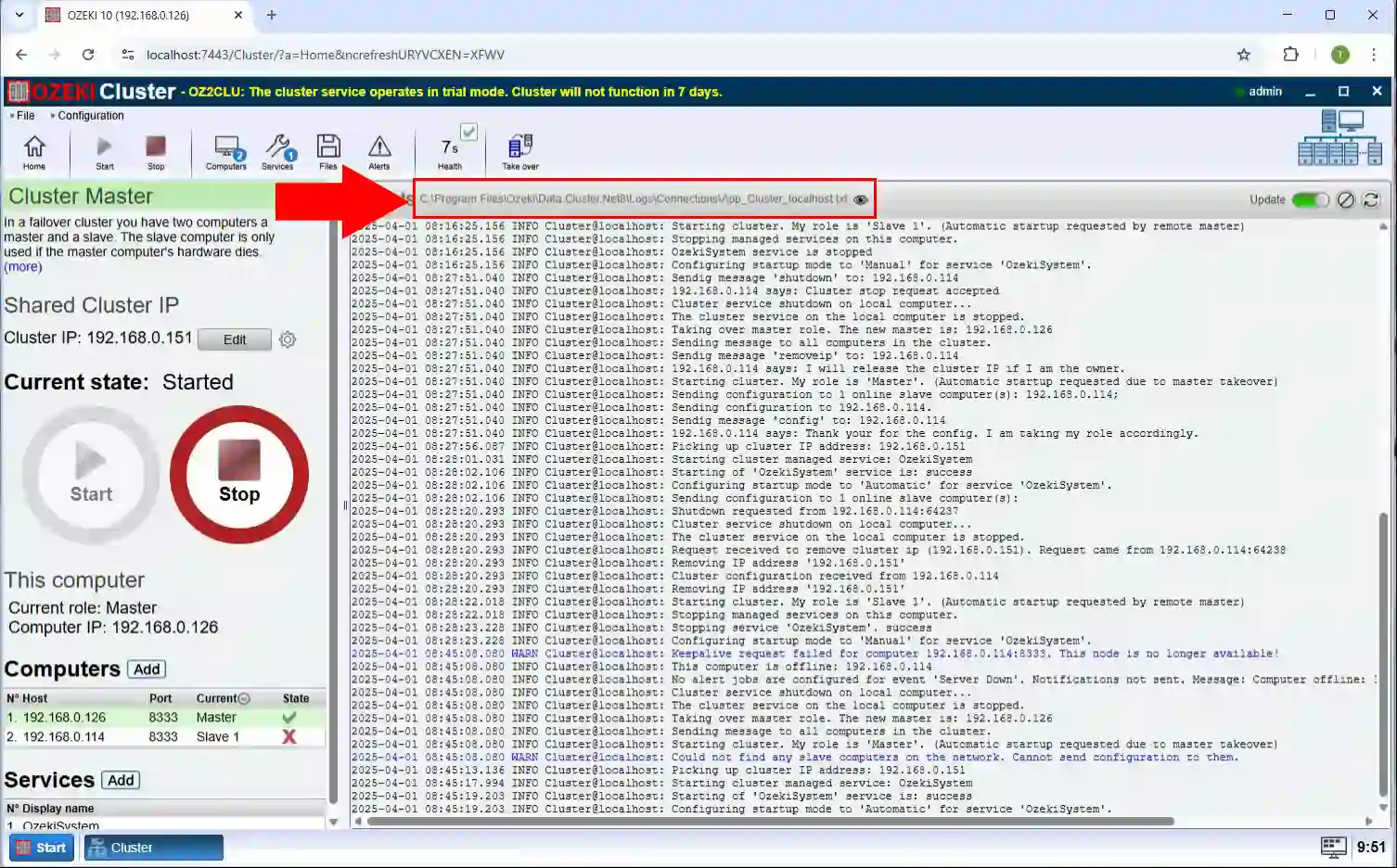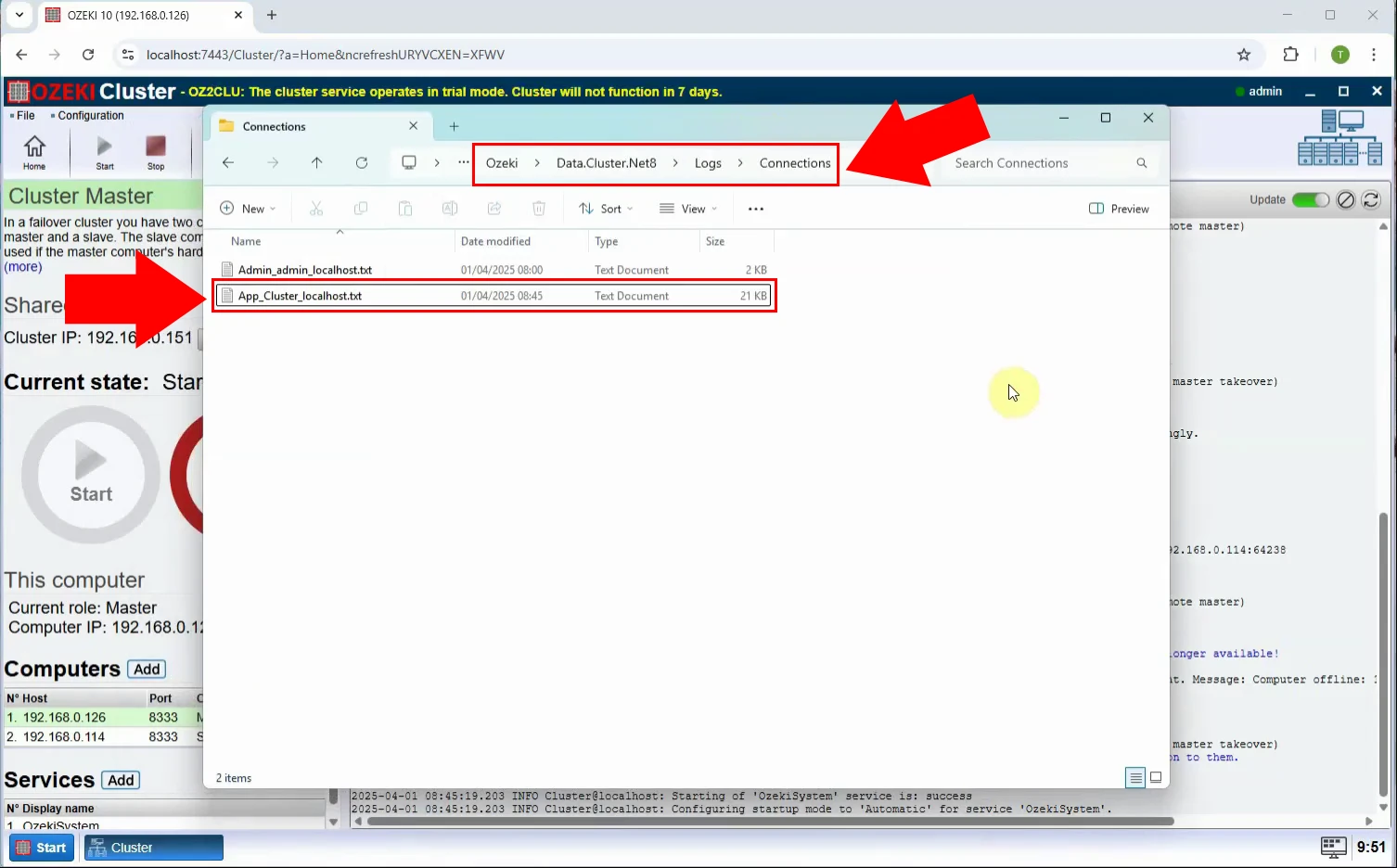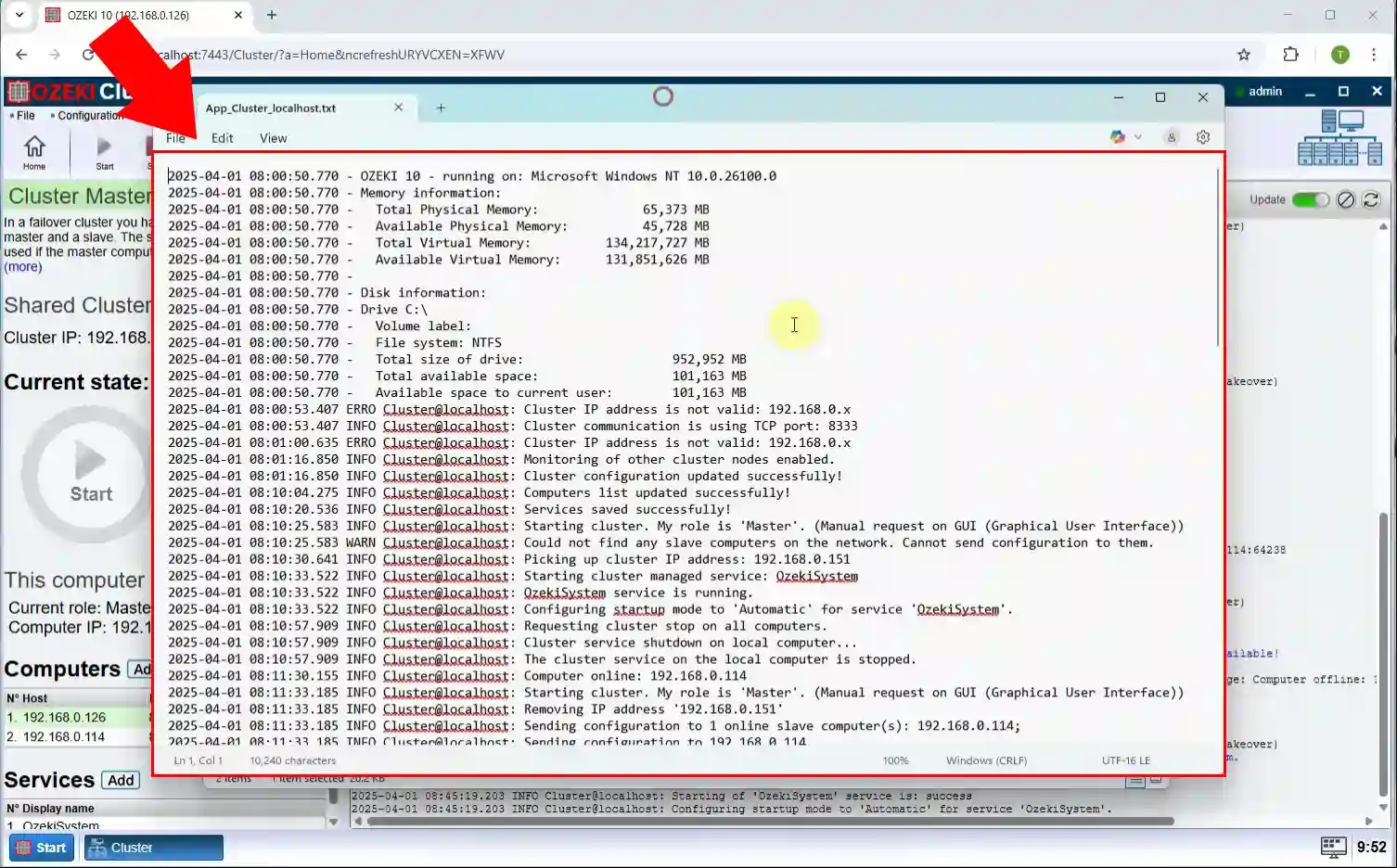How to check the Ozeki Cluster event log
In this guide, you will learn how to check the Ozeki Cluster event log to monitor system activities and identify any potential issues. The event log provides detailed records of operations, errors, and important cluster events, making it a vital tool for system administrators. By following the steps outlined here, you will be able to quickly locate, open, and review the log files, helping you maintain smooth operation and troubleshoot any problems efficiently.
What is Ozeki Cluster?
Ozeki Cluster is a high-availability solution designed to ensure continuous operation of communication services, such as SMS and voice, even in the event of hardware or software failures. It allows multiple Ozeki servers to work together in a coordinated way, where one server acts as the primary node while others remain on standby, ready to take over automatically if the primary server becomes unavailable. This setup improves system reliability, reduces downtime, and guarantees uninterrupted service for critical messaging and communication tasks.
How to check the Ozeki Cluster event log (Quick Steps)
- Locate the event log
- Navigate to the Log folder
- Open the event log
- Review the event entries
How to check the Ozeki Cluster event log (Video tutorial)
In this video, you will learn how to locate and view the Ozeki Cluster event log to monitor system activity and diagnose issues. The tutorial guides you through finding the log file location on your server, opening the event log file with a text editor, and understanding the format of the logged events. By the end of the video, you’ll know exactly where to access detailed information about cluster operations, helping you troubleshoot problems and verify system performance effectively.
Step 1 - Event log file location
Navigate to the Ozeki Cluster installation directory on your server. You can access the path by clicking on an eye icon next to the "Events" title. Inside the "Log" folder, you will find the logs file, which records all important system and cluster-related events (Figure 1).

Step 2 - Open event log
Open the log files using a text editor, such as Notepad or any preferred code editor. This allows you to view the detailed event entries logged by the Ozeki Cluster system (Figure 2).

Step 3 - Ozeki Cluster event log
Review the event log content. You will see timestamped entries showing system operations, cluster activities, and potential error messages, providing insights for troubleshooting or system monitoring (Figure 3).

